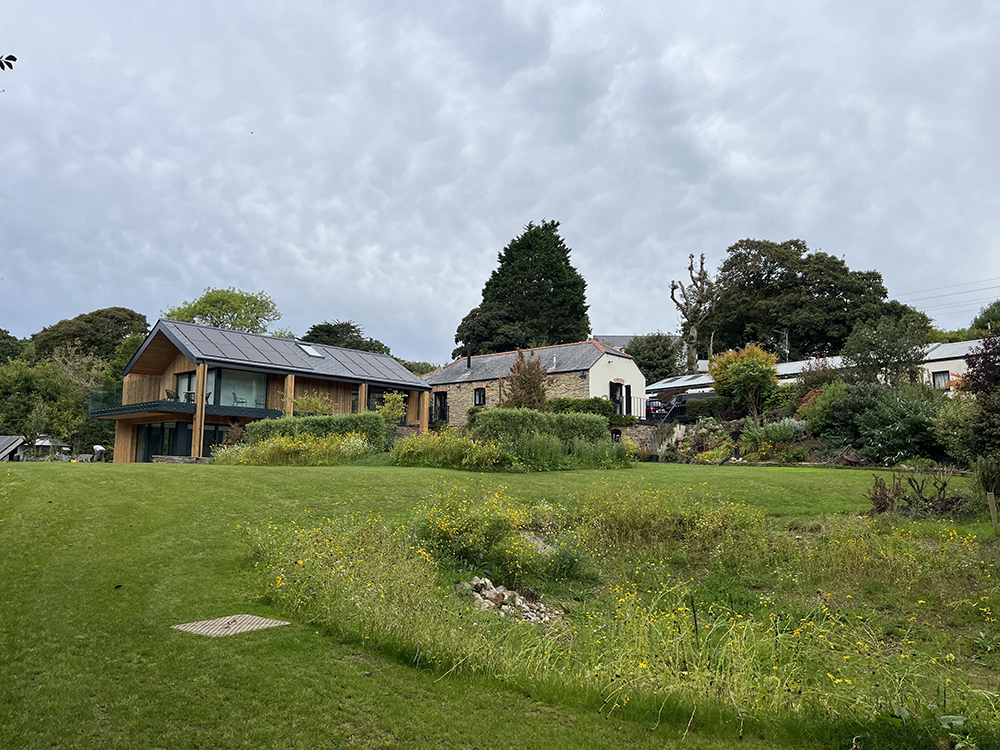Identifying An Overall Budget; Budgeting For Planting; and Budgeting For Built Elements were written for Homes and Gardens Magazine in the UK and published in February/March/April 2013.
They guide you through some key decision making stages, based upon your budget and timescale, and introduce some things to think about.
IDENTIFYING AN OVERALL BUDGET
Changing your garden is an exciting prospect. Do you wish you had somewhere to sit, to relax and to entertain in, and that your garden should be more colourful, vibrant, scented and varied? Do your children want somewhere to play? Maybe you are just a bit bored with a garden you have never really fallen in love with, or perhaps it has become a drain on your valuable time. You need a strategic plan, not just in terms of design, but also how to finance it.
NO MONEY OPTIONS
With no budget, choices are limited but you can make a positive start. Make time for a proper clean and tidy-up. Reveal an un-exploited view or focal point by pruning overgrown shrubs, or removing self-seeded trees. Edge lawns, clear weeds, and mow paths through longer grass. Swap plants with friends, divide existing plants and double your stock. Perhaps you need simply to think about your garden a bit differently, and work on it with new eyes; for instance, that annoying and, hitherto, problematic wet area becomes a beautiful bog garden and you buy plants to suit.
Up to £100
Think about buying some new plants or accessories. You could buy 20 to 30 new container-grown plants or four to five young trees; you could cover 10 square meters with a gravel surface; mulch 20 sq m of planting beds to supress weeds and retain soil moisture; buy 30 to 40 packets of seed; or cheap timber to make a raised bed. You could invest in some attractive containers, or three to four tins of external paint or wood stain. Or, consider a new piece of equipment that will help you save time and improve the health of your garden.
Up to £500
With this sort of budget, you can consider building materials as well as plants. Simple concrete slabs, edging and a sand base will cost around £20 per sq m and will cover 25 sq m; or you could 10 sq m worth of natural stone. Alternatively, you could buy 20m of lapped panel fence, more than 100 new container-grown plants, turf for a decent new lawn, a liner for a pond, a set of garden furniture, or a small shed. Or make a statement with a piece of sculpture.
Up to £1,000
Now you can just about start to consider bringing in outside help. Two days from a skilled tradesperson will cost somewhere between £200 and £400, leaving £600 or so left for materials, but there are very few significant projects that can be completed in just two days. A good investment is a digger driver to prepare the ground for your own work. You could repairs walls, re-lay or extend an existing area of paving, build a new fence, invest in professional tree surgery, install simple garden lighting. You can buy 300-plus plants, a very good quality set of garden furniture, 10 big trees, 50 fruit trees, or enough transplants for a small woodland.
£5,000 to £10,000
The lower sum will buy you around seven or eight days’ work by a skilled tradesperson with a semi-skilled helper and still leave £1,500 for materials, allowing you to plan a more serious project. It is important this is well conceived. Think about paying for some time from a professional designer (particularly if your budget is more than £5,000), who will help you make the most impact with your money. Expect to pay a designer around 15 per cent of your budget.
£10,000 to £30,000
At this level, you should definitely employ a professional contractor and a designer to ensure that the finished work is done to a specified standard. Contract labour and design fees will account for around two-thirds of the total cost, but much less if the garden is mainly planted, laid to lawn or more natural. Architectural (built) approaches will always cost more.
A planting based approach (i.e. little or no building work) should be budgeted at around £30 per sq m while hard landscaping on flat sites will require at least £100 per sq m. Add to this any walls, fences/screens, trees, hedges and individual elements such as water features, garden structures, gates, lighting and ornament. Creating a 10 sq m urban garden pretty much from scratch, with significant hard surfacing, high-quality planting, some work to vertical barriers and some special features, will cost from around £25,000. With design fees on top, you quickly reach the £30,000 mark.
£50,000 to 80,000
A budget of this scale is for a very serious project and will enable you to create a garden that will not only make a very big difference to you, but will be a legacy for future generations. Obviously you will not attempt this alone; you will need a professional designer, who will account for around 10 per cent of your budget. However, that will buy you the peace of mind that the garden will be the very best that your budget affords.
£100,000 plus
Building with this sort of money takes us into the realm of gardens of national significance, and in Britain, just 30 or 40 of these are completed each year. Nearly all will have been professionally designed and constructed, materials will have been sourced from the best suppliers and manufacturers, and labour will be of the highest quality.
- How much of your own time can you invest? Your time is free, but have you got the skills, knowledge and physical strength to carry out the work?
- Favour a simple idea done well, over a complicated idea done badly (with insufficient budget)
- With a low budget, favour soft landscaping (plants) over hard (built elements).
- For bigger budgets, invest money on things that will make the garden more enjoyable and comfortable. Aesthetic changes (colour, scent, texture) are comparatively cheap and a good choice for low budget options.
- Consider phasing the work to help with cash flow. Do not feel that you need to do everything yourself.
- Combine low cost (done by you) with higher cost (done by others) when developing an approach.
- If using professional building work, allocate around 60 per cent of your budget for labour costs.
- Plan your changes to cost 75 per cent of your budget. You will always think of something else once you have started work, or will have forgotten something.
- Over £5,000: seek help from a designer who will be professionally trained and have the skills and knowledge to make the best use of your budget.
- Do not be unrealistic about labour costs
- Do not forget that site clearance (in preparation for any changes) costs money
- Do not forget to ask for quotes that include 20 per cent VAT for materials and labour
- Sloping and very wet sites will cost around 50 per cent more than an equivalent flat site
- Restricted access (for example, a terraced house) will restrict the use of machines, and will add cost and inconvenience.





